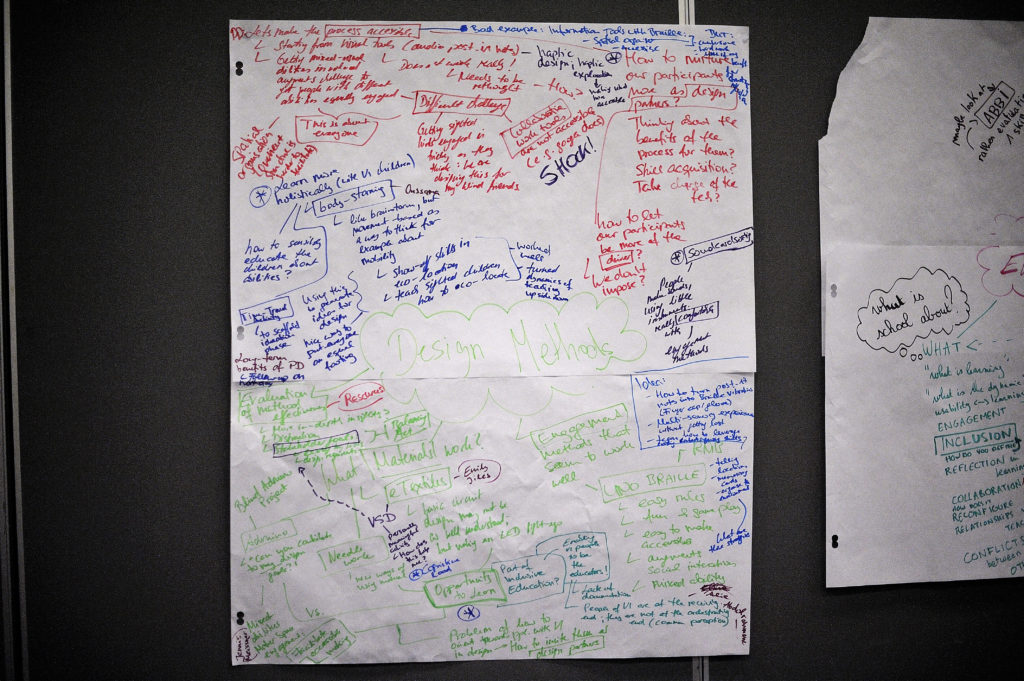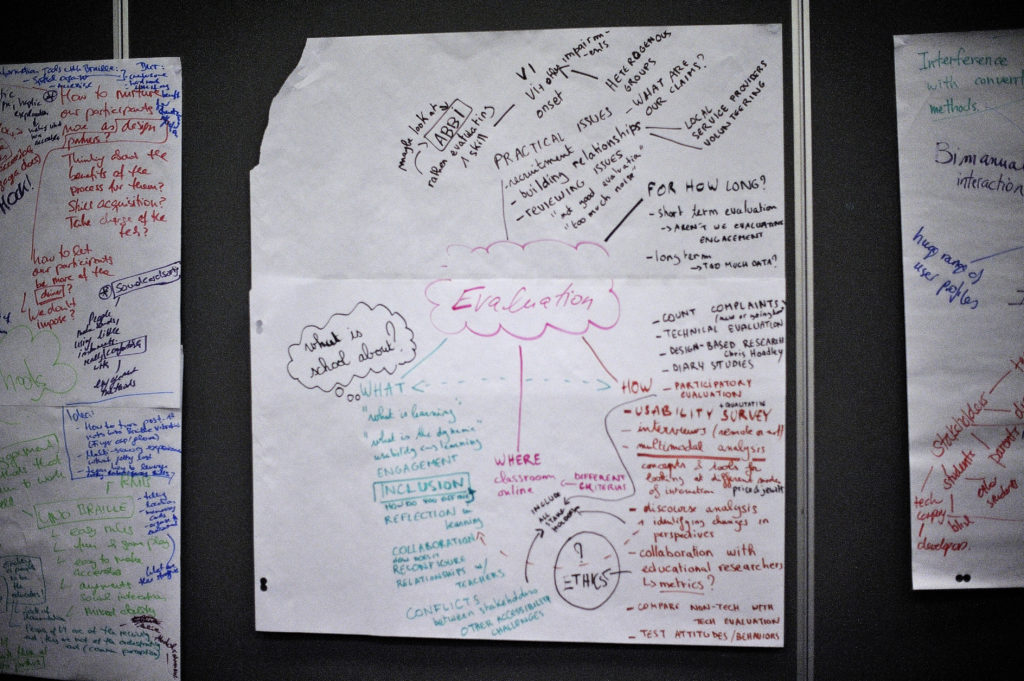This page summarizes what went on during the workshop, and provides a few actionnable insights for the research community. The list of the participants and their contributions can be found here. We also summarise the discussions and the wide range of research presented at the workshop in a report published by ACM Interaction.
Morning: mapping the state of research
After short individual presentations, we collaboratively mapped the themes and research state of three sub-areas: modes of interaction and interaction techniques, design methods, and evaluation approaches. One researcher was in charge of each topic (respectively Marcos Serrano, Anja Thieme and Emeline Brulé). The participants went from one table to the other.
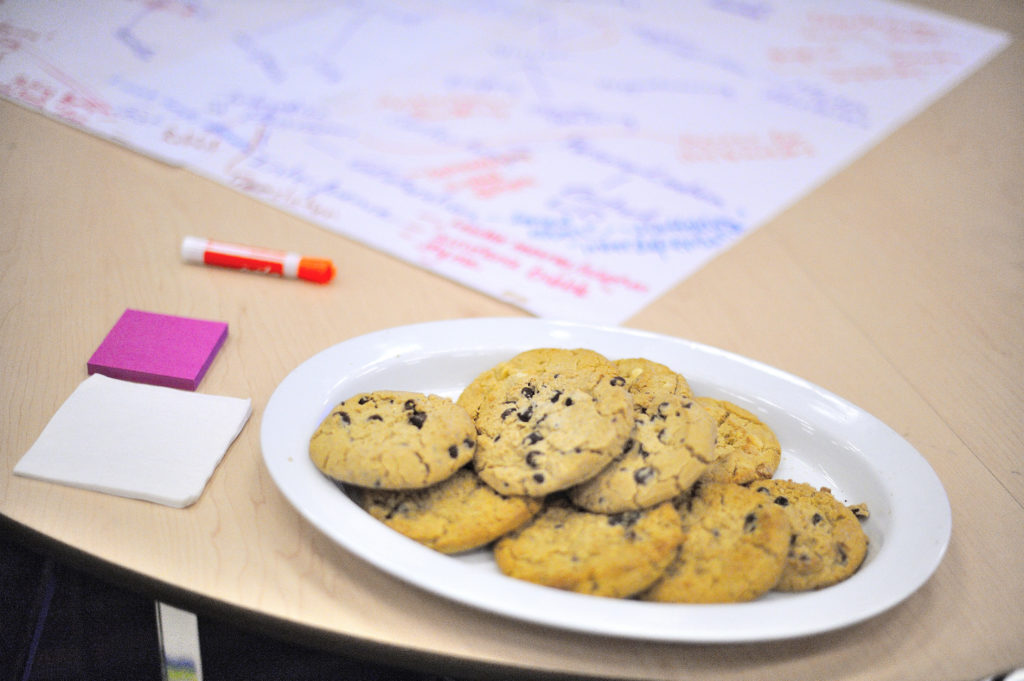
Cookies are a must in any research workshop.
Modes of interaction/Interaction techniques
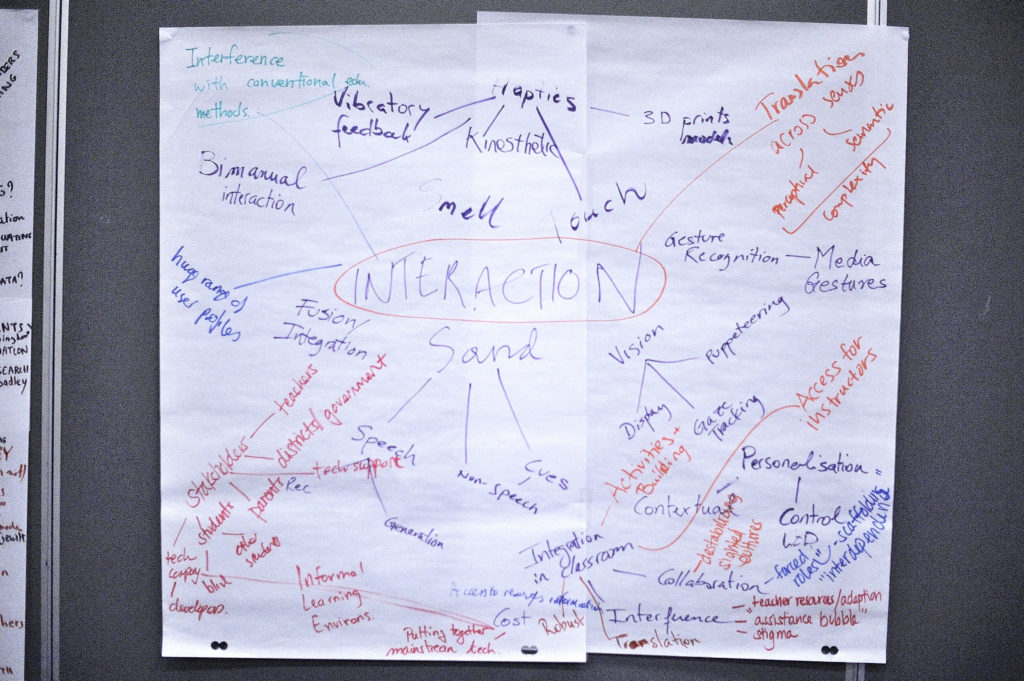
Mindmap made by the interaction techniques group, led by Marcos Serrano. Click to see the full size version.
We started by discussing the different interaction modalities that can be used, such as Haptics (vibratory feedback, touch, 3D print models), for which should consider bimanual interaction, smell, gesture recognition, sound (both as input and output).
We then moved into more high level consideration of designing interaction and how such interaction could be better integrated in the classroom. To this end, it should:
- Support collaboration: one idea could be to force rules by creating an interdependence between VI and non-VI (where both would have needed data to complete the tasks for instance);
- Minimize interference (avoid the “assistance bubble” and stigma). It could help if teachers had resources to adapt their teaching;
- Robustness and cost are two important considerations, one solution is to put together mainstream technologies.
We should allow VI students to personalize their interaction to the context and to the required level of detail (LoD).
We ended up talking about the stakeholders for such technology: teachers and students first, it should involve parents, but also technologies companies, the tech support people at school and the districts/government.
Design methods
The design methods groups listed thoroughly what works and what doesn’t as inclusive ideation methods. The process is described by Anja Thieme in the audio recording below.
Evaluation methods
An important issue for any research with minority groups is that evaluation often does not meet HCI criterias in terms of number and homogeneity of participants. Visually impaired children for instance are few an very different. But more broadly, the workshop participants pointed the shortcomings of current mainstream modes of evaluation, i.e., the quantitative evaluation of a prototype with an average of 12 similar participants in a controlled setting. Instead, they pointed out:
- The multiple criterias that can be used (WHAT, on the poster). School is not only for knowledge acquisition, but also for socialization for instance. An educational technology that does not affect test results but improves relationships between pupils, or with the teacher, can be seen as successful. In many cases, these criterias can not be determined beforehand, and their mix is different from a pupil to another;
- The methods used (HOW) depend on the criteria. The participants listed a number of accessible methods: usability survey, interviews, multimodal or discourse analysis…
- Which leads us to practical evaluation issues. How to collaborate with educational researchers? Is the current categorization of users (i.e., separating blind from low vision users) adequate, or should we rather base it on given skills or classroom units? How do we build relationships with teachers, and should we keep evaluating interventions against a control group, given the opposition to this approach some of us have encountered?
This discussion was prolongated in the afternoon.
Afternoon: identifying priorities, planning for the future
In the afternoon, we had planned more hands-on activities. We encouraged the participants to define an outcome they would like to reach, from participatory design tools to the outline of a research paper. This session was particularly useful for creating relations between researchers working on similar or converging topics. It began with a card sorting activity: each participant wrote down the outcomes they’d like to reach
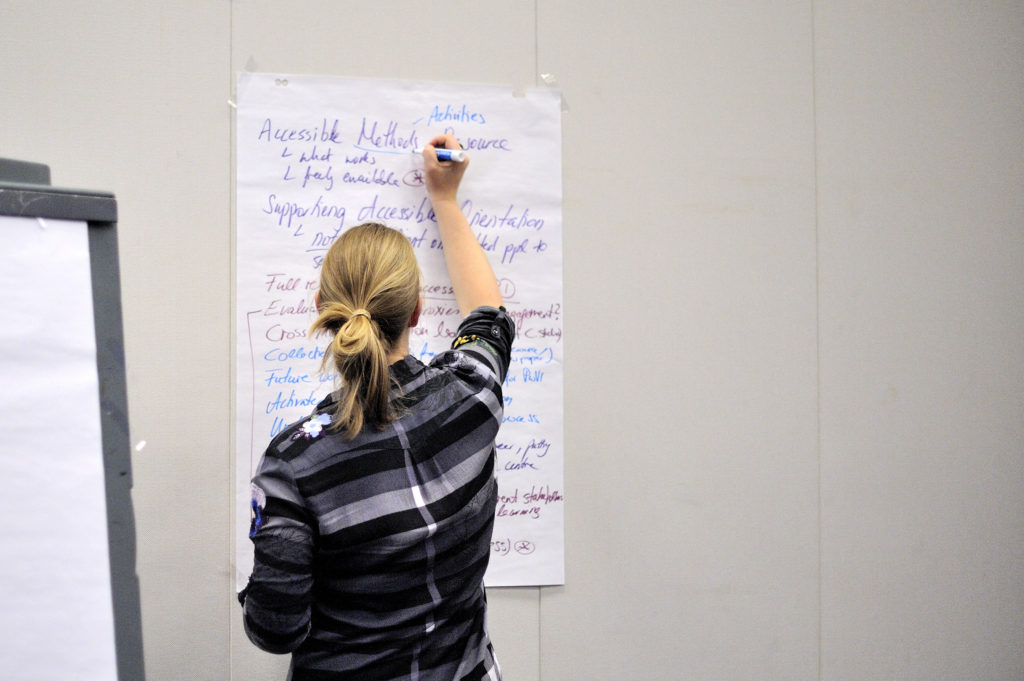
Anja Thieme is writing up the themes chosen by the participants on a poster.
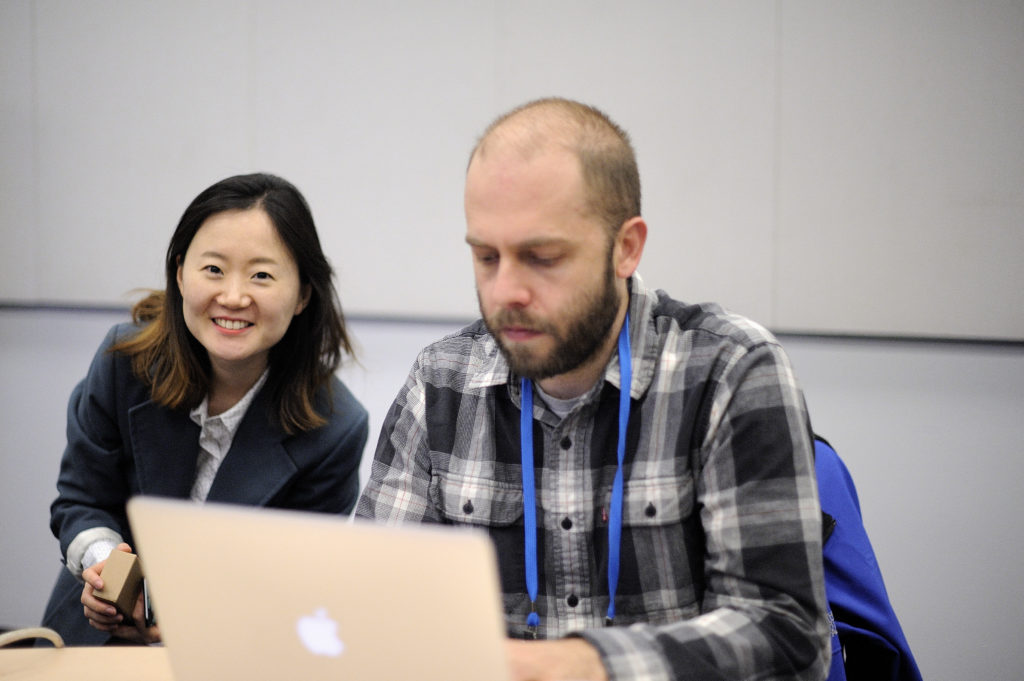
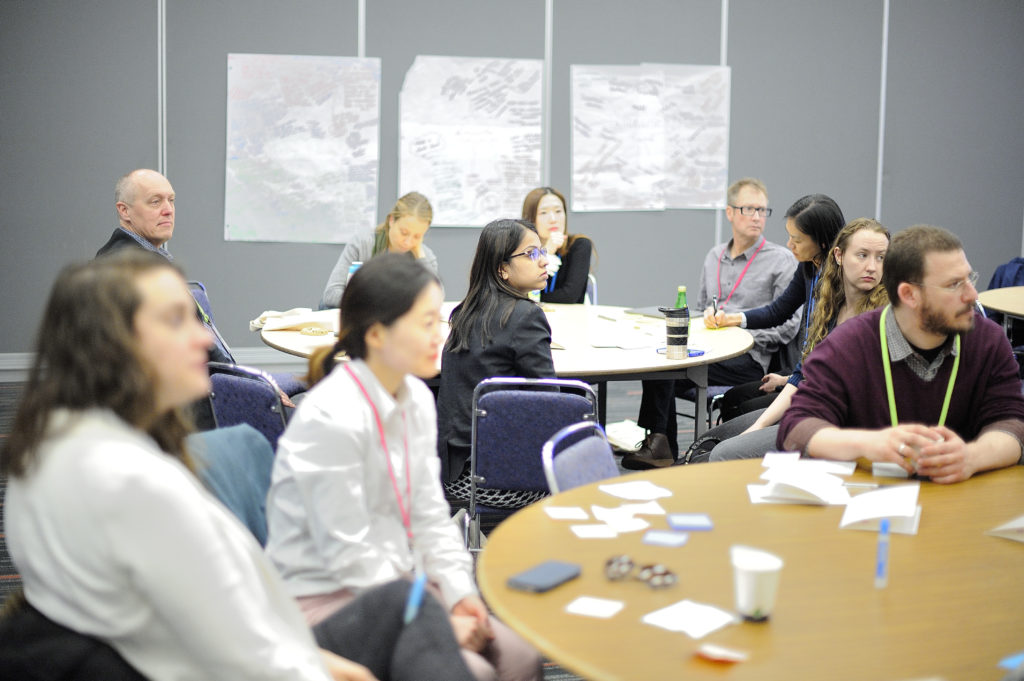
The participants.
Top priorities according to the research participants:
Resources for teaching inclusive design
This includes resources for supporting disabled students pursuing design-related careers. This is not necessarily done in schools: how to support community- and peer- based learning, with the sharing of resources between disabled researchers, designers, and students? What about YouTube channels? Podcasts? Blogs? How do we organize multi-generational mentorships between disabled practitioners, or disabled adults and children?
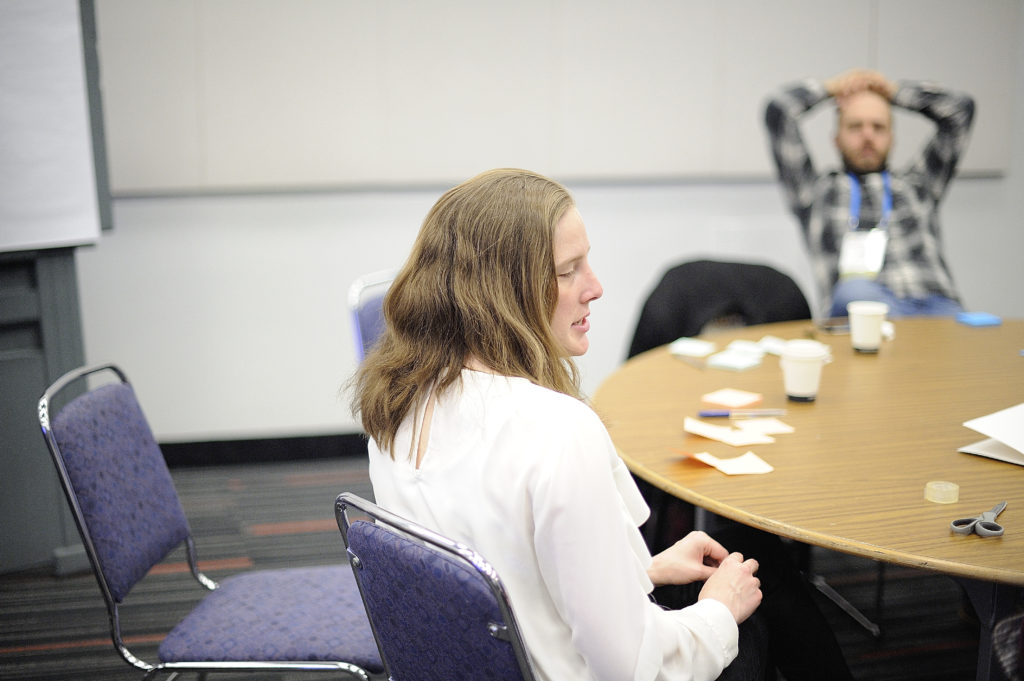
Cynthia Bennett, a PhD student working on accessibility and design, who led this group discussion.
Community building around technologies and inclusive learning
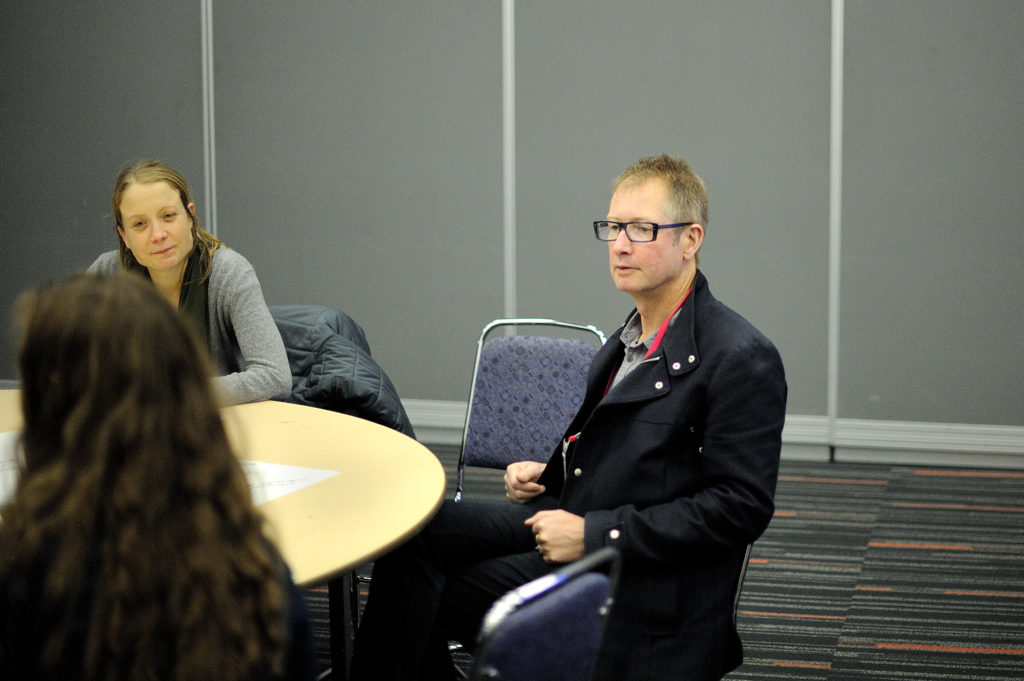
An issue encountered when working on inclusive design is that there is rarely an important community around sub-topics. This slows down the development of research. This group looked at which topics, suggested during the workshop, had a sizable community of research, that could give it an impulse. The intersection with the tangible interaction community remains small. However, understanding multi-modal perception for the automation of material presentation could attract people from different fields, such as data-visualization, VR…
In their own words:
Accessible creative methods
This group discussed existing and needed creative methods and supports. Anja Thieme and Oussama Metatla had brought their toolbox to the workshop. Anja presented the methods she used on different research projects at Microsoft (read here about project Torino), as well as mainstream products that can be used for accessible prototyping (e.g., Palette Gear, braille labels). The group discussed their experiences with accessible worshops.
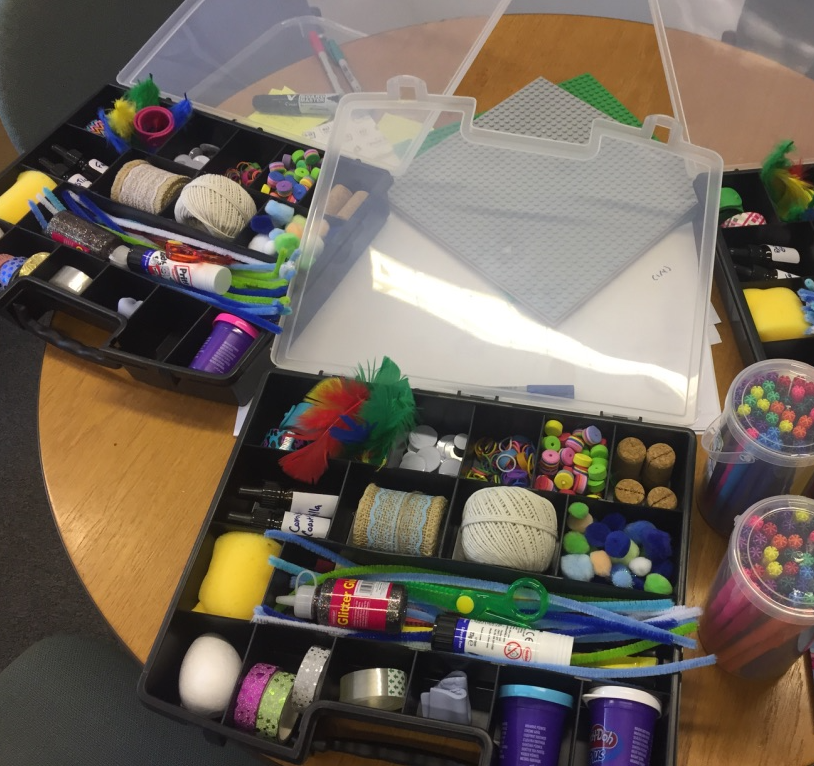
Oussama’s box of multisensory stuff.
Reference paper for adequate evaluation approaches
This last group wrote the outline for a paper on evaluation methods. Following-up on the issues identified in the morning, this group identified the step for having a paper on adequate evaluation approaches and methods in the domain of inclusive learning technologies. This includes a meta-study of HCI and learning sciences papers, but also probably a survey of researchers currently working on the topic to give innovative methods their fair share.
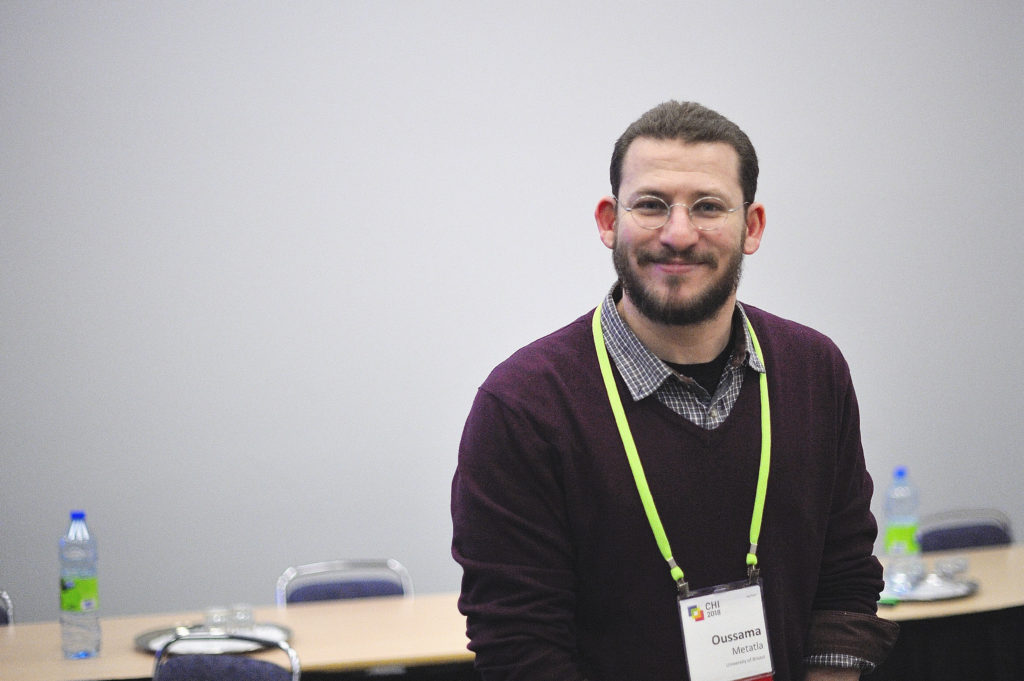
Oussama Metatla, workshop organizer and participant in the evaluation methods group.
Additionally, this workshop made us realize there were no convenient and accessible documentation tools. Shared Google documents and Framapads are very often used but neither support well edition using screen readers!
Additional resources and references recommended by the participants
- http://www.csun.edu/cod/conference/2018/sessions/index.php/public/presentations/view/324
- https://www.disabledlist.org/
- On textile work as an accessible design methods (http://www.emiliegiles.co.uk; Janis Lena Meissner)

